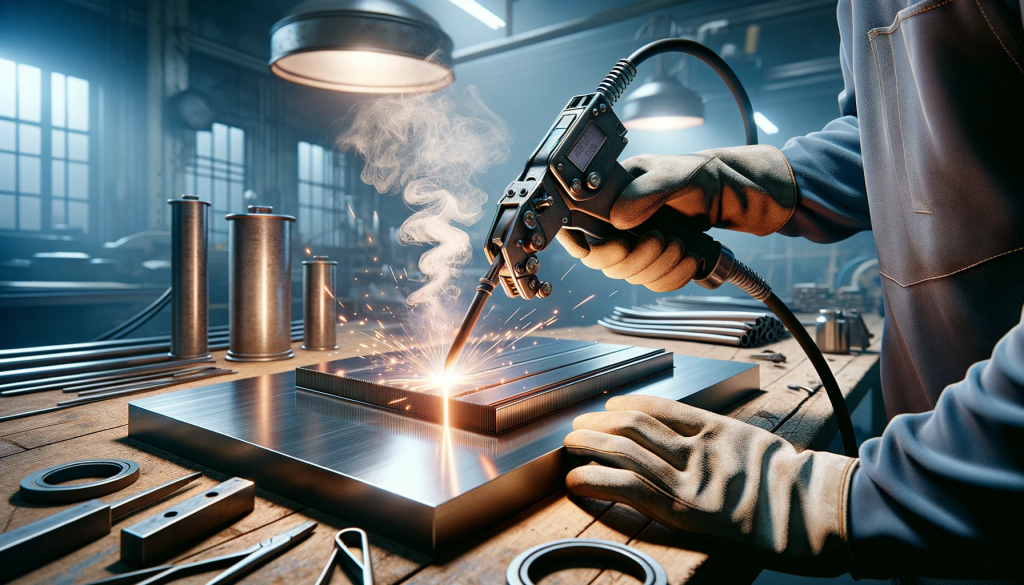Stainless Steel Welding: Challenges, Methods, and Best Practices
Stainless steel, with its remarkable durability, corrosion resistance, and aesthetic appeal, has secured its place as a versatile metal used across various industries. However, welding stainless steel presents a unique set of challenges due to its mechanical properties and diverse grades and types. In this article, we will delve into the intricacies of welding stainless steel, exploring the challenges it poses, the methods employed to overcome them, and the best practices that ensure optimal results.
I. The Challenges in Welding Stainless Steel
Welding stainless steel demands a deep understanding of its properties and potential challenges. Here are some of the key challenges faced when welding stainless steel:
1. Warping & Cracking: Stainless steel's low thermal conductivity and high thermal expansion make it prone to warping and cracking. Excessive heat input or rapid temperature changes during welding can stress the metal, leading to distortion as it cools. To mitigate this, striking a balance between heat input and weld quality is essential. Additionally, creating a heat sink using materials like copper or brass can absorb excess heat and prevent warping.
2. Rust Formation: Despite its corrosion resistance, stainless steel welds can develop rust due to excessive heat or contamination from carbon in filler materials. Choosing the right welding temperature and stainless steel filler alloy can minimize the risk of rust formation.
3. Welding Dissimilar Steels: Welding different metals or stainless steel grades with varying melting points can be challenging. Proper selection of filler rods and preheating the metals can help ensure effective fusion.
4. Switching Between Jobs: Stainless steel's lower melting temperature compared to mild steel can be problematic when switching between the two. Welders must be mindful of this temperature difference.
5. Toxic Fumes: Welding stainless steel produces toxic fumes in the form of hexavalent chromium gas, which can pose health risks to welders. Effective respiratory protection and proper ventilation in the workspace are crucial for safety.
II. Stainless Steel Welding Methods
Depending on the project's requirements, various welding processes can be employed to join stainless steel parts. While this list is not exhaustive, it highlights several key methods used for welding stainless steel:
1. TIG Welding (GTAW): Tungsten Inert Gas (TIG) welding is a popular choice for stainless steel due to its stable arc and precise heat control. TIG welding machines can switch between AC and DC polarities, offering flexibility. Selecting the right electrode geometry and size is crucial for successful TIG welding.
2. MIG Welding (GMAW): MIG welding offers faster speeds than TIG welding due to its continuously fed electrode. Properly executed MIG welds may not look as aesthetically pleasing as TIG welds, but they are effective. Using a Teflon wire liner in the MIG gun ensures consistent wire feed and protection from contamination.
3. Shielded Metal Arc Welding (SMAW): Stick welding stainless steel is a practical choice in terms of cost, portability, and simplicity. It can be performed in various environments, making it suitable for outdoor welding. SMAW is best for thicker stainless steel pieces (above 2mm), but controlling heat input can be more challenging.
4. Flux Cored Arc Welding (FCAW): Flux-cored arc welding is chosen over SMAW for its ability to create more uniform weld beads. It is ideal for varying material thicknesses and demanding conditions. Maintaining a 10° drag angle allows for proper flux coverage.
5. Resistance Welding: Resistance welding, including spot welding and seam welding, creates clean welds without filler material. It offers fast weld completion due to stainless steel's high electrical resistance. A high-quality welder with sufficient power output is essential to prevent deformities near the heat-affected zone.
6. Friction Welding: Friction welding, including friction stir welding and friction plunge welding, is an economical choice for certain applications, as it does not require consumables. It is particularly suitable for austenitic stainless steel. Factors like friction pressure, burn-off length, and rotational speed must be considered.
III. Stainless Steel Welding Best Practices
To achieve successful stainless steel welds, adherence to best practices is vital. Here are some essential best practices for welding stainless steel:
1. Safety and Preparation: Prioritize safety by preparing equipment, materials, and the work area. Use a dedicated stainless steel wire brush to prevent contamination. Ensure welders wear appropriate protective gear, including gloves and goggles, to minimize health risks and injuries.
2. Filler Metal Selection: Choose the right filler material that matches the grade of stainless steel being welded. Consider factors like weld joint design, aesthetics, and overall weld performance when selecting filler material.
3. Parameters: Experienced welders should fine-tune welding parameters such as power supply settings, torch angle, travel speed, and deposition rate. A deep understanding of stainless steel grades and welding methods is essential to achieve high-quality welds.
4. Shielding Gas: Properly select the shielding gas composition for MIG and TIG welding processes to protect the weld pool from contamination. The correct choice of shielding gas reduces the risk of weld defects.
5. Heat Input: Consider the project's variables when determining the ideal heat input for welding stainless steel. Generally, the welding current for stainless steel should be about 20% less than that used for carbon steel to prevent corrosion.
Conclusion
Welding stainless steel presents unique challenges due to its properties, diverse grades, and potential for issues like warping, rust formation, and toxic fume production. However, with a deep understanding of these challenges, the right welding methods, and strict adherence to best practices, stainless steel welding can yield impressive results. It is crucial to prioritize safety, select appropriate filler materials, fine-tune welding parameters, and choose the correct shielding gas to ensure the highest quality stainless steel welds.
